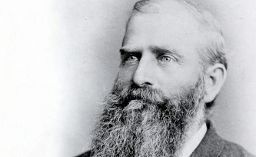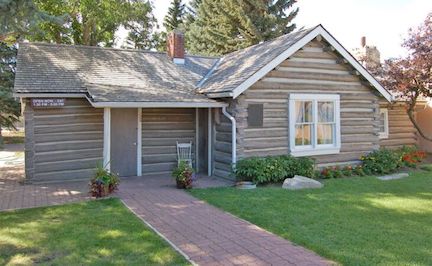Charles Ora Card
Charles Ora Card was the man who settled much of Southern Alberta Canada. The town of Cardston, originally Card's Town, was named after him. He served as the town's first mayor.[1]
Card was born on November 5, 1839, in Ossian, New York. He and his family joined The Church of Jesus Christ of Latter-day Saints in 1856, and like the majority of the Saints, left their home to join with the body of the Church, which by this time had settled in Utah Territory. The family crossed the plains in a handcart company; Card was sixteen years old at the time and “assisted by standing guard, hunting buffalo, and carrying women and children across rivers.”[2]
The Card family first settled in Farmington, Utah, then moved to Logan in 1860. Card attended school in Ogden and worked at his father’s sawmill and small farm. He later owned both.
In addition to the work he did for his father’s businesses, he worked as a teacher at the Sabbath Schools in Cache Valley and eventually became the superintendent over schools in Logan. He became the superintendent of construction on the Logan Tabernacle and the Logan Temple. He was a coroner, road commissioner, and justice of the peace in Cache Valley. For sixteen years he served as a city councilman. His work with infrastructure, such as irrigation for multiple Utah towns, would later help the communities of Alberta. He was also a member of the first board of trustees of Brigham Young College.
Card practiced plural marriage and in 1886, Church president John Taylor directed him to settle Canada as an asylum for those families who were being prosecuted as a result of the Edmunds-Tucker Act. He took his third wife Zina Young Williams with him (she was chosen to go by his other wives). His second wife, Sarah Jane Painter, stayed in Utah; his first wife, “Sallie” Beirdneau, divorced him in March 1884. His fourth wife, Lavina Clark Rigby, lived in Idaho. Prior to his departure to Canada, he had “lived in hiding, often changing locations”[3].
Card settled the area of Cardston and in the early days of the settlement, he cooperatively opened a store, created a cheese factory, a flour mill, a sawmill, a butcher shop, and brought in the first steam threshing machine. These businesses, however, did not pay many dividends.[4] He served as land agent for Dominion Lands, the Calgary and Edmonton Land Company, the Hudson Bay Company, and the Albert Railway and Irrigation Company.
in 1889, Church president Wilford Woodruff asked him to expand the Cardston settlement and other communities such as Mountain View, Kimball, Beazer, and Leavitt were soon populated with Latter-day Saints. They met with some opposition from the Canadian government, who had outlawed the practice of polygamy, but after the 1890 Manifesto accepted by the Church, opposition declined. The Church participated in the Alberta Railway and Irrigation Company to irrigate the region. The Latter-day Saint settlers were referred to as “the most successful colonizing instruments on the continent” and Card was dubbed “Canada’s Brigham Young.”[5]
After his health began to decline in 1903, he moved his family back to Logan and his wife Lavinia took care of him during his last days. He died on September 9, 1906. He was the father of sixteen children.

